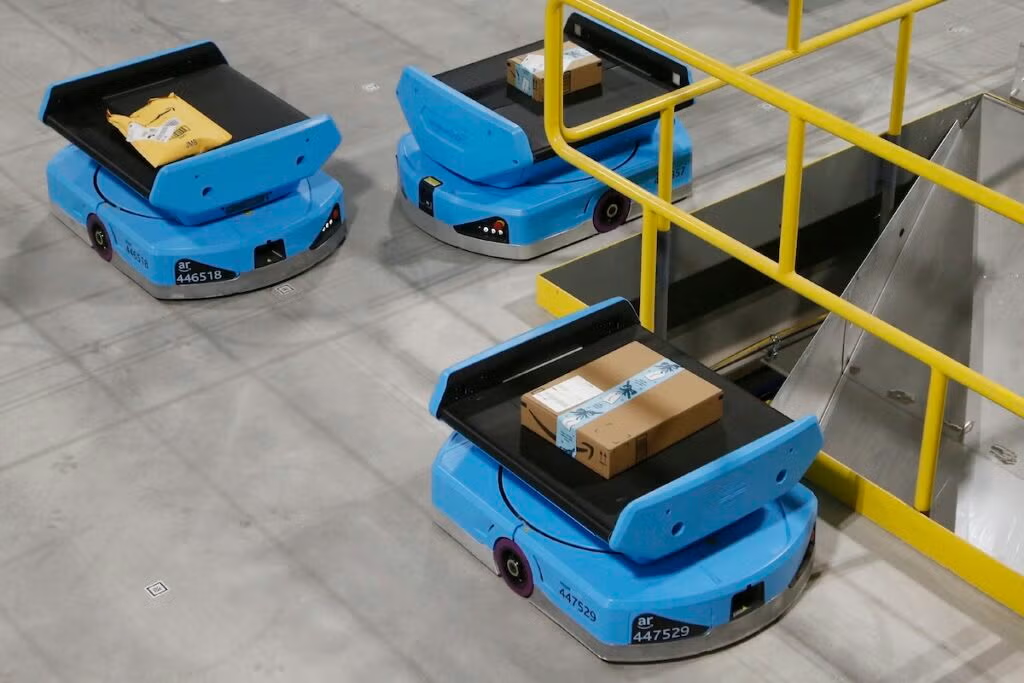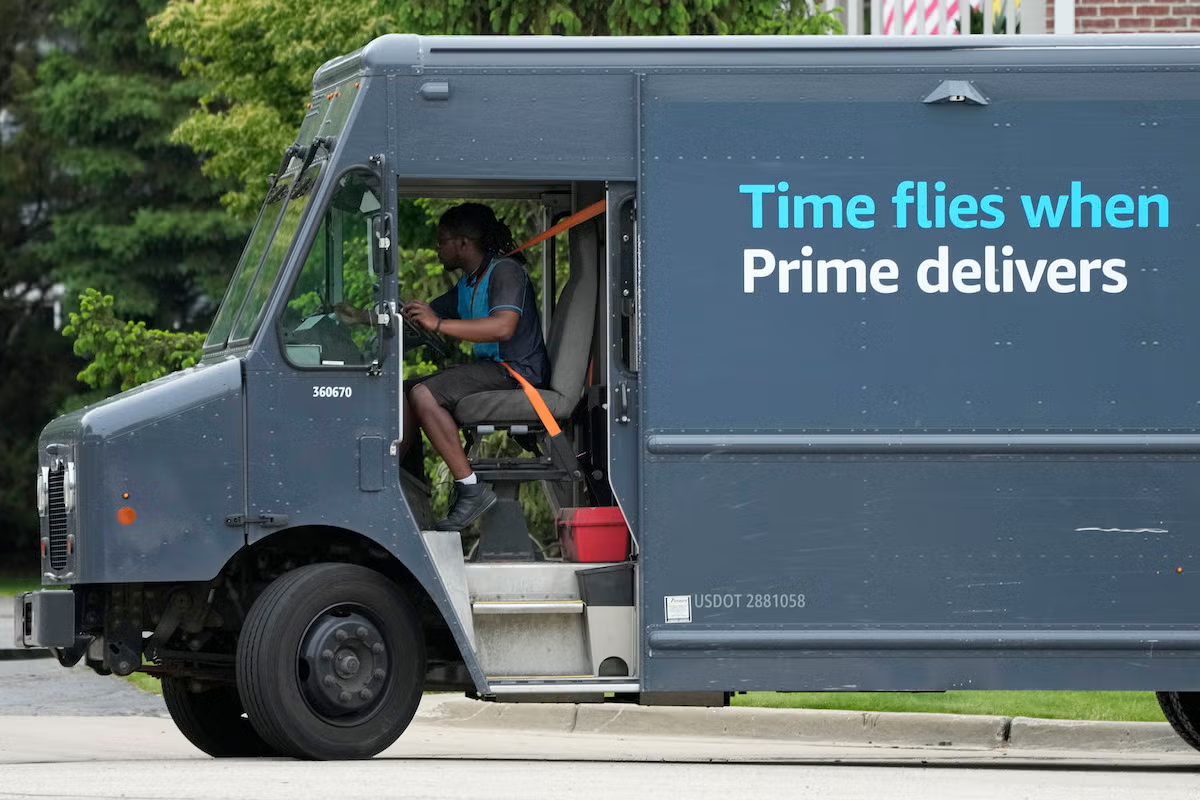This story is from The Pulse, a weekly health and science podcast.
Find it on Apple Podcasts, Spotify, or wherever you get your podcasts.
Amazon belongs in the same category as a lot of other legendary tech companies — Apple; Microsoft; Google. It’s the story we’ve all heard a million times: ivy league graduate starts a company in his garage, introduces an incredible innovation, and blows the whole market away.
But with Amazon, what exactly that innovation was isn’t so obvious. They didn’t invent online shopping, or the idea of faster shipping. They just happened to do it better than anyone else. So, what is it that makes Amazon the juggernaut it is today?
According to Selene Silvestri, a research scientist at the MIT Center of Transportation and Logistics, the answer is how Amazon has developed their supply chain, the giant, finely oiled machine that moves goods across the globe, from manufacturers to our front doors.
And that requires answering a lot of questions.
“How items travel from suppliers to customers — and which suppliers and which items, in which amounts and how often,” Silvestri said. “How these goods are actually shipped from suppliers to distribution centers, using which transportation modes. How these goods are managed in a warehouse. And then how do we ship these goods to the final customers?”
Today, Amazon sells more than 600 million products, and as their offerings have grown from books to toys, electronics, clothes and eventually pretty much everything, it became necessary to take more control of their inventory.
“They needed to ensure that items were available, that they could deliver promptly,” Silvestri said. “They also needed to start having their own warehouses, and they had to do so with two things in mind — they needed to be cost-efficient, and they needed to also have these warehouses in locations that would allow them to ship fast.”
Amazon calls these warehouses fulfillment centers — sprawling buildings where products are received from manufacturers or sellers, sorted, and packaged for delivery; a process that operates like an intricate clockwork. They now have hundreds of them around the world.

Linda — who asked us not to use her last name to protect her job — started working at Amazon almost four years ago, after being laid off from her job as a union organizer due to the pandemic. She now works at a Philadelphia-area fulfillment center that spans around a million square feet, and houses a staff, Linda estimates, of 3-4,000 people. She says all workers have highly specialized jobs, to go along with a highly streamlined packing process.
It all begins, Linda said, on the first floor with the inbound dock, where products from manufacturers and sellers are unloaded. They’re then placed on a belt that takes them upstairs.
Here, the goods get unboxed and stowed into big, freestanding shelves that they call “pods.” After that, they’re counted, to make sure no stock has been lost, and sent to a “picker” who removes the items from the pods and places them into “totes,” big yellow plastic bins.
Those totes are then sent back down to the first floor, where items get packaged into boxes and envelopes, plastered with shipping labels, and then taken to the ship dock, where they’re placed on pallets to be loaded into trucks.
And it isn’t just humans who’re doing this — Amazon also has robots helping out. At Linda’s center, they have two kinds.
“One of them is a huge arm-looking thing that will pick up the totes and palletize them,” she said.
And the second are these Roomba-type robots that bring the pods — the big, freestanding shelves — over to the packers, so they can pull out the items they need without having to leave their station.

But Amazon also has other strategies for speeding up the packing process — putting pressure on employees.
“Automatic write-ups,” Linda said. “It’s not even a person writing you up; it’s just a computer saying you were in the bottom 3 percent. And it’s pretty gross because it’s not even like you can be slow — it’s like everyone could be going fast, but if you’re at the bottom 3 percent, they could write you up automatically. So, people are constantly afraid about that, and then also the managers just will come and talk to you if you’re not going fast enough for them.”
This practice is especially insidious, Linda said, because the required rate of speed changes every day — and managers don’t tell workers what that rate is.
“This is one of the most infuriating things about it because people are so scared. They’re afraid of losing their job,” Linda said. “They act like you’re a robot so if you are having a bad day and you just happen to go a little slower than the day before, even if you’re making your rate and you’re fine, they will come and talk to you.”
Both speed — and the repetitive movements required by each job — often lead to injuries.
Broken and sprained fingers are common, Linda said, especially among workers who deal with the conveyor belts, as are wrist and back injuries.
Linda suffers from a hip and hamstring injury that she sustained several years ago while working at a different Amazon facility in the “induct” position.
“Which is basically just standing there scanning and putting a sticker on the package, but because they would have us going at high speed the whole time, I developed a repetitive stress injury from that that I’m still dealing with to this day,” she said. “If I don’t stretch on a particular day, or any day, I really can’t walk.”
So that’s how Amazon keeps its warehouses running at greater and great speeds.
But how does the company know what items need to be in which warehouses and when?
The answer is another key innovation that’s allowed Amazon to stock thousands of different products in the places they need them: forecasting algorithms.
“Amazon has been able to develop solutions, analytics — to leverage analytics, leverage machine learning — to build algorithms that allow them to predict demand,” Selena Silvestri from MIT said.







